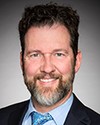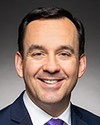As the law now stands, any amount of money that is not reimbursable and that is provided to a political party is a contribution under the act. I do know that in the CEO's recommendations there is a recommendation, not for parties but for candidates, to look at exceptions when there is a dispute regarding the campaign so that financial assistance for the cost of litigation may be outside the limits that are currently in the act in terms of expenses. But that recommendation does not deal with political parties.
Evidence of meeting #59 for Procedure and House Affairs in the 42nd Parliament, 1st session. (The original version is on Parliament’s site, as are the minutes.) The winning word was pps.
A video is available from Parliament.




